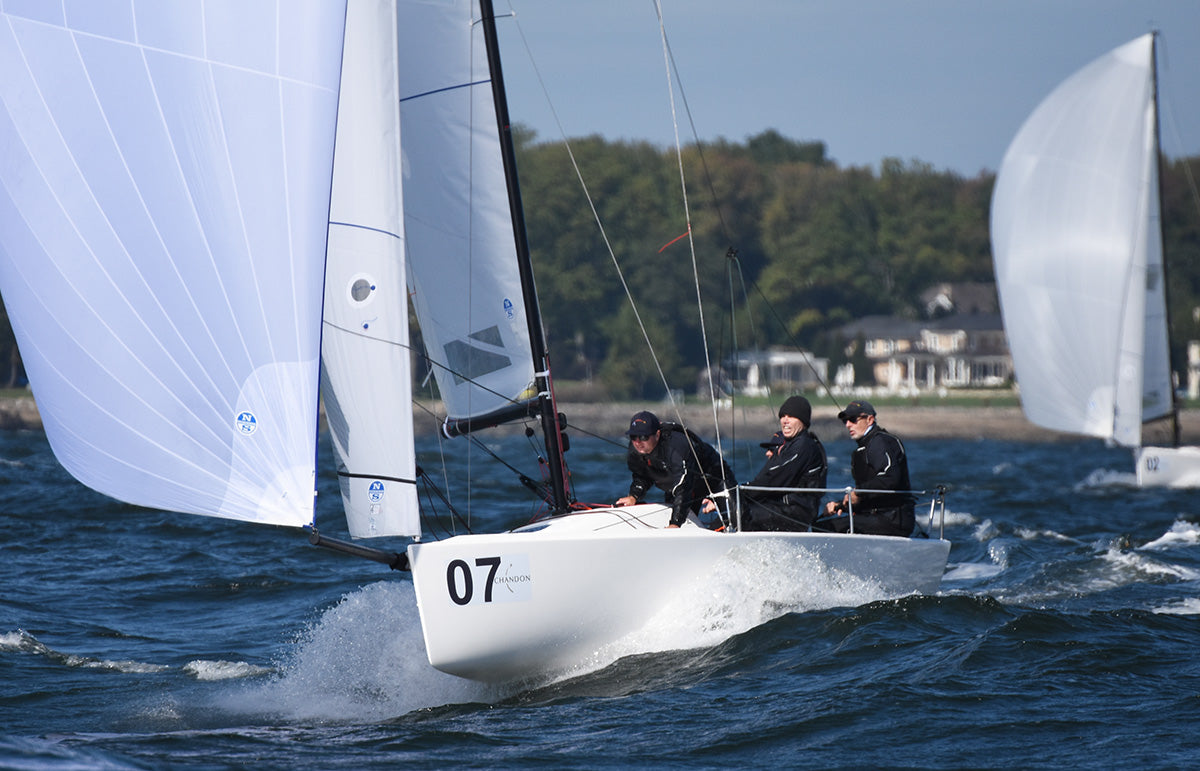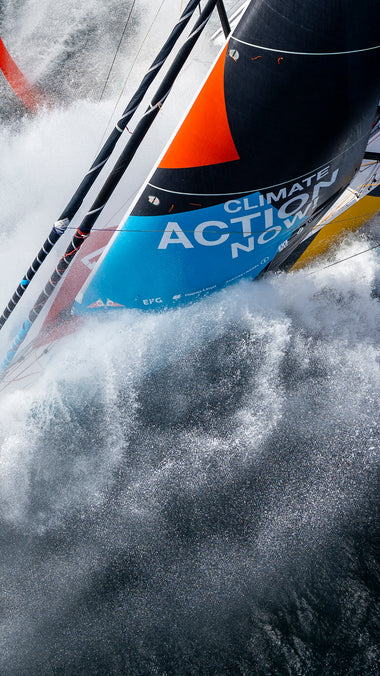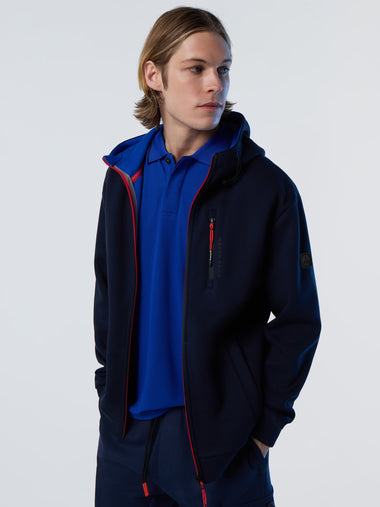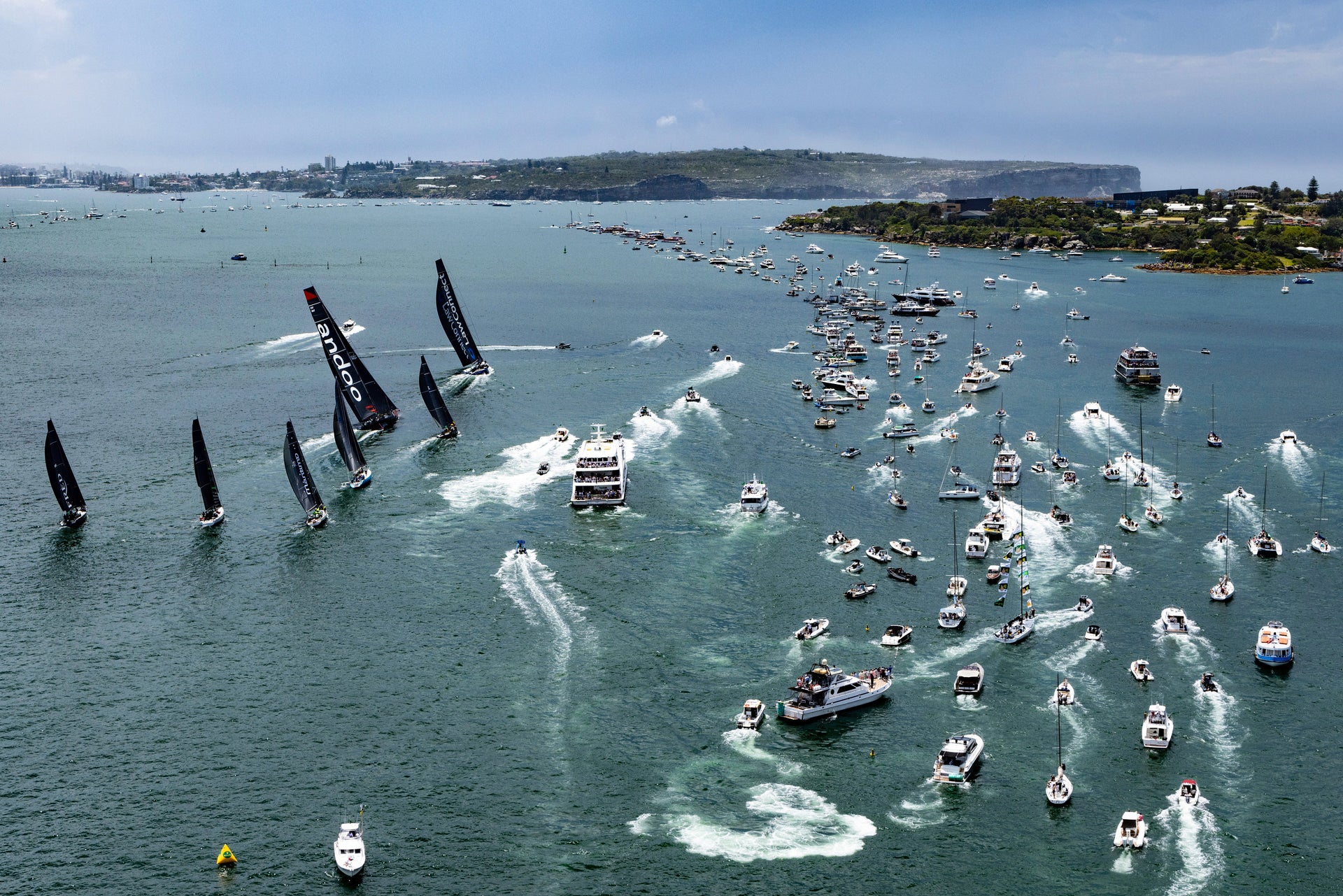NEW J-6 JIB SHINES AT THE 2017 J/70 NORTH AMERICANS
JOEL RONNING WINS J/70 NORTH AMERICANS
J-6 proves to be the most user-friendly High-Clew Jib available

Fifty-three teams met in New York at American Yacht Club for the 2017 J/70 North American Championship. Going into the first day, the wind was sustained at 25, with larger gusts to 30. The waves were very steep, due to the current going against them. Keeping safety of the teams and regatta personnel in mind, PRO Mark Foster made the right call to stay ashore.
Day two brought lighter sailable conditions with the wind ranging from 12 to 18 knots. The challenging aspect of the day was the steep chop that was left over from the previous days’ strong winds. Pounding through the disorganized, at times 1.2 meter waves, increased the difficulty of holding a lane off the line. To make up for lost time from the previous day, 4 races were sailed, each lasting about 1.5 hours. Exciting planing conditions downwind allowed sailors to exercise a variety of techniques, including wing on wing in the lighter patches.
Day three was a stark contrast from the start of the event, with winds from the same easterly direction, only peaking at ten knots in the morning tapering to almost nothing in the afternoon. Strong up-course current made starting and sailing downwind in the light air difficult. A late shift to the right on the last downwind in one race saw a bit of fleet inversion with the some of the boats that were last around the final top mark making it into the top ten. With the overall windspeed dying and oscillating between 40 degrees, racing was called for the day.
Due to the lack of races so far for the event, an earlier start time was in store for day four, meaning anything could happen with the scoreboard. Winds started out at 5-12 knots out of the southwest for the first two races of the day. Shifty conditions gave the edges flatter water and ended up paying for those who committed to the sides. For the final race of the regatta, the wind picked up to 15 knots, and by the end of the first beat , teams were back up to planing conditions for downwind. Joel Ronning and his team Catapult won the final race of the regatta, claiming the title. Congrats to Joel and his crew on some great sailing, and a special thanks to Mark Foster for getting in as many quality races as possible in trying conditions.
Catapult sailed with North XCS-1 Mainsail, J-6 Jib and AP-1 Spinnaker. We are very proud of the way our new J-6 jib performed at the North Americans. It delivers an untouchable mode of upwind speed and height. The new J-6 jib has again proved its top end speed in a wide range of conditions.
“The results at the NAs reinforce that the J-6 is the most user-friendly high-clew jib available.” said North Sails One Design President Tim Healy.
Here are some tips from the North Americans:
Setting Up the J-6 Jib for Max Speed
One key element of setup is the weather sheet. It is imperative to sail with enough weather sheet to give the sail some depth and power down low, while generating twist and keeping the upper leech open. Make sure the weather sheet comes on as quickly as possible after the tack as the boat needs the power from the bottom of the jib to get up to speed immediately after a tack. Some teams even experimented with “pre-setting” the weather sheet as they steer through the tack!
Another key to trimming the J-6 for maximum speed is to make sure that the main sail is flat enough down low to be sure that you aren’t getting too much return from the lower leech of the jib. Your lower shrouds shouldn’t be too tight, keeping in mind that you have enough outhaul on and, in over 13 knots, that you have some vang on to keep that lower main flat. Look for pre-bend wrinkles in the lower third of the main to be sure you’re set up correctly.
Detach from the Pack
In big fleets, it is incredibly helpful to be able to separate from other boats and give yourself the opportunity to use your boat speed to make gains on other packs. Packs create high traffic, and disturb the airflow. It is important that the tactician looks for the lanes that might allow them to “detach” from these packs and move up that half ladder rung, which leads to getting a narrow cross later on up the beat. This can make a difference between a top 10 rounding, and being stuck in the middle.
Having a good start in the front row is the first way to get yourself out and running away from the big pack of boats, but it doesn’t stop there in a 50+ boat fleet. The tactician needs to think ahead and ask themselves, “If I tack here, am I going to have a lane?” Or will I be putting the boat in a position to make a gain using my extra gear of boat speed?”
The same can be said for the downwind legs as well. Rarely it works to sail the middle of the course downwind because there is so much disturbed airflow from the big fleet. Pick a side and commit to it – doing your best to separate from other boats and keep your lane and air clear.
When picking which gate to round in a congested fleet, make sure you predict which mark will have the cleanest “escape”. Which mark does it look like the pack in front of you will round? After you round the leeward mark, there will still be boats coming down the run. Which side of the course has less boats on it? Even if you want the right side of the course on the next beat, it might be better to round the course-left gate mark if it means staying clear of downwind boats coming at you with spinnakers, creating a ton of chop. Every bit of separation you can get can lead to big gains at the finish line!
For more information contact our on-site support team at the NAs: Zeke Horowitz, Mike Marshall, Eric Doyle or Max Skelley.
































